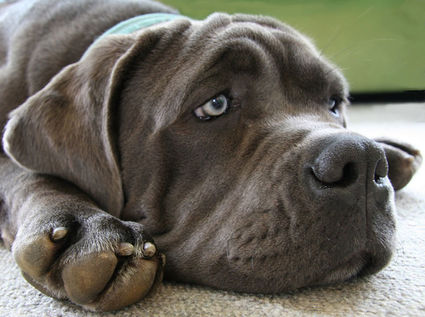Stopping Separation Anxiety
It's A Dog's Life
Separation anxiety is hard to treat because it happens when you are gone. But there are a few tried and true methods that will eliminate most separation anxiety and get you on the right track. First is to kennel train your dog. The reason is not to keep your dog kenneled 24/7 but to stop her flight/fight behavior (pacing, barking, hiding, avoiding, etc.) when you are gone. The kennel should be big enough so that your dog is able to lay down easily, but not so big that they can walk around in it. Being in a more confined space stops the dog's fight/flight pattern and teaches them a new association with you leaving the house: sleep.
If your dog is already kennel trained, start putting them inside the crate when you are home. Even if you are only home for a few hours a day, put them in for at least 20 min to an hour a day for the first week. The idea to is start to create separation while you are home. This will not be as traumatizing as doing it while your gone, and you can see how they respond to confinement. Start with the crate in a separate room with the door open, and then eventually shut the door. Then start leaving long enough to drive around the block, no more than 10 minutes. Build on that until you can be gone for an hour or so and they are fine and still crated when you return. Eventually you can move to a bigger crate, then maybe a room or small-gated yard, or eventually the whole house or yard. Secondly, stop all shadowing behavior. This means do not allow your dog to follow you around from room to room. We stop dogs from following us by setting several boundaries, especially when they are actively following. Stop them, and if they don't stop, put them in a short time out. The goal again is to teach them independence while you are home so that your leaving is less traumatic as you refuse to let them be around you constantly. Feel free to reward dogs that give you space and are respectful of boundaries by inviting them in and giving them quiet attention, then ask for space again. Space is a huge trigger for dogs with separation anxiety. Finally, stop all hellos and goodbyes when coming and going. Ignore them for 15 minutes before you go, and repeat this process upon your return home. If your dog jumps on you when you come home, try crossing your arms and standing tall like an Indian and pivot on your feet as they jump up at you. Don't touch or talk, just move calmly and deliberately away by turning your body away from them. Don't walk away as that will cause them to chase you. But by simply removing your attention by turning away, you become less exciting and all jumping should stop.
You can also desensitize them to keys, purses, putting on shoes and jackets and any other stress trigger they associate with you leaving by doing these things and then NOT going anywhere. Thus, removing the excitement from the objects and events.
The key is to remove excitement and squelch overly-emotional behavior on both your and your dog's part surrounding you leaving the house. If you feel sad for your dog when you take off, you are affirming their belief that there is something to feel sad about. Simply do what you need to do, be casual, and know that your dog will be just fine without you for a bit. By your example, your dog will learn to feel the same way!




